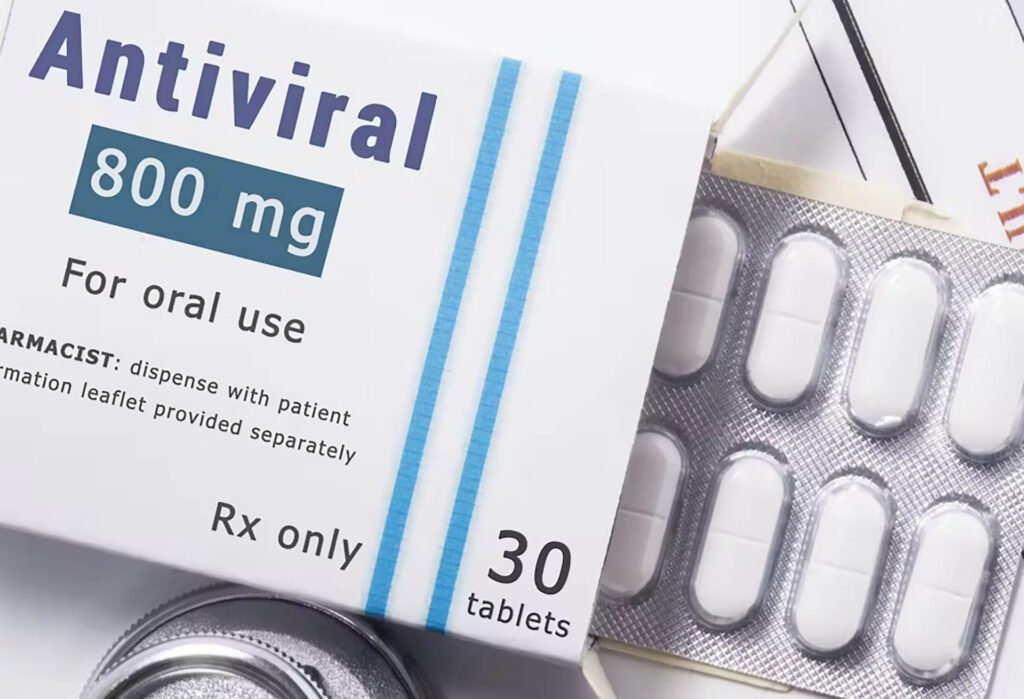Antiviral medicines—acyclovir, valacyclovir, and famciclovir—are the backbone of cold sore care. They’re helpful, but they also have limits that matter if your goal is simple: stop outbreaks before they start. Here’s a clear, evidence-based look at how well antivirals actually prevent HSV-1’s primary symptom (recurrent herpes labialis—“cold sores”), how common outbreaks are in the U.S. and Canada, and where new options like InterceptCS™ fit in.
How common are cold sores?
HSV-1 is widespread. In the United States, national serology shows roughly half of people 14–49 have antibodies to HSV-1, though rates vary by age. Many never notice symptoms—but recurrent herpes labialis is still very common; a recent overview reported recurrences affect about one-third of the U.S. populationIn Canada, pooled studies suggest HSV-1 exposure climbs with age (about 36% <20 years old to ~70% ≥40 years). When you zoom in on overt cold sores (not just antibodies), Canadian patient-facing groups estimate roughly one in five Canadians has a cold sore each year—millions of people.
What antivirals can—and can’t—do for prevention
Topical antivirals (e.g., acyclovir 5%, penciclovir, docosanol)
Topicals can shave time off healing if applied early, but their preventive power is modest. A Cochrane review found topical acyclovir “probably has little effect” on preventing recurrences. UV-trigger models also show topical acyclovir doesn’t meaningfully stop induced outbreaks. In short: useful for symptom shortening, not reliable for true prevention.
Oral antivirals (acyclovir, valacyclovir, famciclovir)
Daily suppressive therapy reduces how often outbreaks occur—but does not eradicate them. Trials and summaries report meaningful reductions in recurrence frequency (often on the order of 40–70% depending on dose, population, and trigger), with benefits strongest while you stay on therapy. In triggered settings (e.g., dental work, intense sun), prophylaxis can cut flares, but again doesn’t guarantee none occur.
Episodic treatment at the first tingle (prodrome)
Starting an oral agent early can shorten or blunt an episode; however, even when started at prodrome, antivirals frequently do not fully prevent a blister from forming. Some studies show incremental improvements (e.g., fewer ulcerative lesions with certain combinations), but “complete prevention” is inconsistent.
Bottom line on antivirals:
They’re proven, safe for long-term use in many people, and excellent at managing HSV-1 (shorter, fewer, less severe outbreaks). But if you’re hoping they’ll reliably stop a cold sore every time, especially without daily suppression, the evidence doesn’t support that expectation.
Where InterceptCS™ Takes Over
What it is: InterceptCS™ (Therma Bright) is a handheld medical-grade device using timed, measured thermal therapy. The manufacturer states it’s clinically proven and approved in Canada for prevention when used promptly at prodrome (within three hours). Health Canada maintains public listings of licensed medical devices; InterceptCS is marketed in Canada as a Class II device for cold sore prevention, per company materials and Canada’s device-licensing framework. How it differs from antivirals:
- Timing is everything. Like antivirals, InterceptCS is intended at the very first tingle. The claim—unique among widely available options—is prevention of the cold sore (i.e., stopping progression to a blister) when used immediately at prodrome. Company communications emphasize this prevention claim, which distinguishes it from U.S.-cleared light/heat devices labeled only for lesion management after sores appear.
- Drug-free. For those who prefer to avoid daily pills or can’t tolerate them, a non-pharmacologic, on-demand approach is attractive.
Important context:
- In Canada, medical-device approvals (MDL) differ from drug approvals; the regulatory standard and evidence package are not identical to randomized drug approvals. Still, a licensed prevention indication signals Health Canada reviewed safety and supporting data under its device framework. In the United States, FDA device clearances for cold-sore gadgets typically target treatment of symptoms rather than prevention; check local labeling wherever you live.
Putting it together
If you rarely flare, episodic topical or oral antivirals may be enough to speed healing. If you flare often—or if even a single visible sore is a big problem—daily suppressive antivirals can substantially cut recurrence frequency, but they’re not a guaranteed shield and require continuous dosing. For people who want a drug-free, on-demand prevention tool at the prodrome stage, InterceptCS offers a Health-Canada-approved option specifically positioned to prevent cold sores when used immediately, according to the manufacturer.
As always, discuss your outbreak pattern, other medications, and preferences with a clinician. But it’s fair to say: traditional antivirals manage HSV-1 well yet fall short of consistently preventing every sore, while newer device-based strategies like InterceptCS aim directly at stopping the lesion before it starts—especially if you act fast at the first tingle.
This article is informational and not a substitute for personalized medical advice.

